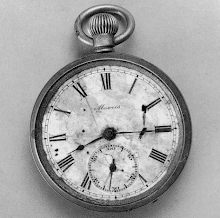skip to main |
skip to sidebar
Karnack, TX — No end is in sight in a dispute between the U.S. Army and Environmental Protection Agency over cleanup at the former Longhorn Army Ammunition Plant at Caddo Lake. The Caddo Lake Clearinghouse — which consists of groups that advocate for the lake — heard during a meeting this week that the dispute over the former ammo plant site boils down to an argument about how well the groundwater must be cleaned up ... "We've been waiting for a couple of years at least (to get the groundwater cleaned). Neither the Army nor the EPA can tell us when it's going to end," [chair of the Restoration Advisory Board Paul] Fortune said ... Hydrologist George Rice, during his presentation at the Thursday meeting, said perchlorate has been identified as the groundwater contaminant ... Rice said: "Last year, the EPA said the perchlorate standard would be out this year … The Army agrees that whatever the drinking water standard is, that will become the cleanup standard."
Caleb Brabham
Longview News-Journal
October 16, 2015
Longhorn Army Ammunition Plant (LHAAP) is a former, government-owned, contractor-operated and maintained Department of Defense facility located in central-east Texas in the northeastern corner of Harrison County. The footprint of the former U.S. Army installation occupies 8,416 acres between State Highway 43 at Karnack, Texas, and the southwestern shore of Caddo Lake ... Studies conducted at LHAAP identified contaminants such as volatile organic compounds (VOCs), perchlorate, metals and explosives in on-site soil and groundwater. These areas of contamination are subject to investigation and cleanup under the Comprehensive Environmental Response, Compensation, and Liability Act (CERCLA).
[Public participant William] Echols asked again why EPA wants residential standards applied when the land will never be used as residential. [EPA Region 6 representative Steve] Tzhone answered that EPA has a policy to restore groundwater to its highest beneficial use ... Mr. Tzhone stated that this is a national policy and the intent is for the policy to be applied across the board to all states ... [Public participant Lee] Eisenberg said that, with water resources being scarce, it’s probably only a matter of time before there is a need to use this water ... [EPA Region 6 representative Steve] Mayer commented that EPA is working on development of a perchlorate standard, and has been working on it for many years. Although the first proposed perchlorate MCL of 15 μg/L was withdrawn due to lack of scientific basis, a new proposed perchlorate standard is anticipated next year.
LHAAP FUDS
RAB Minutes
November 20, 2014 (pgs. 8 - 10)
The Corps of Engineers is conducting an investigation to determine to what extent American University Experiment Station-related activities may have impacted the groundwater within the Formerly Used Defense Site. The investigation involves the installation of monitoring wells and the collection of samples from the wells and additional surface water locations. To date, the Corps of Engineers has installed 53 wells and collected a number of surface water samples. Perchlorate has been detected at levels above the EPA interim drinking water health advisory of 15 parts per billion (ppb) at two locations in the project area, with a highest detection level of 146 ppb identified on American University’s campus [and the other in front of 4820 Glenbrook Road]. Groundwater is not used as a drinking water source in Spring Valley.
 Free Hit Counter
Free Hit Counter






